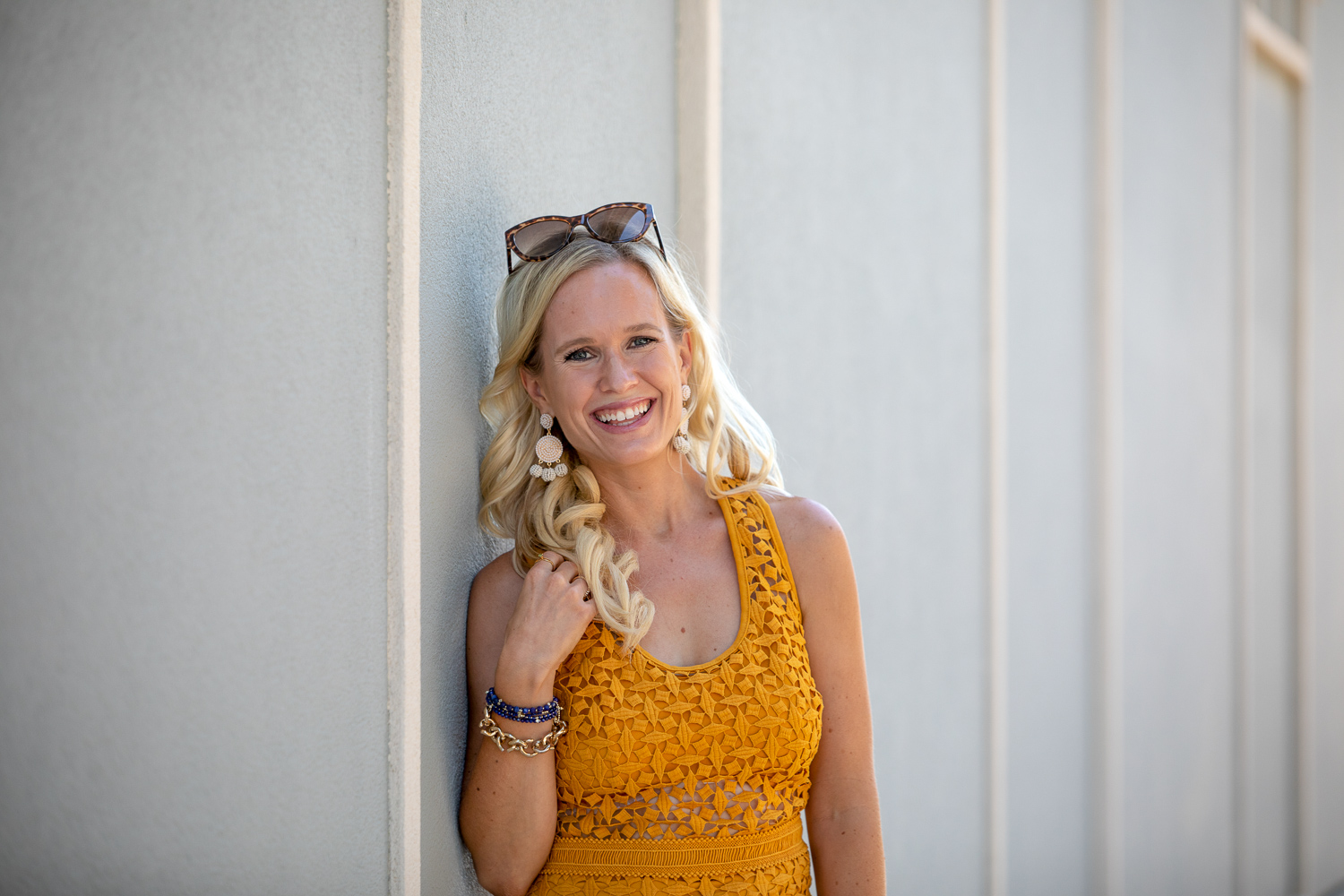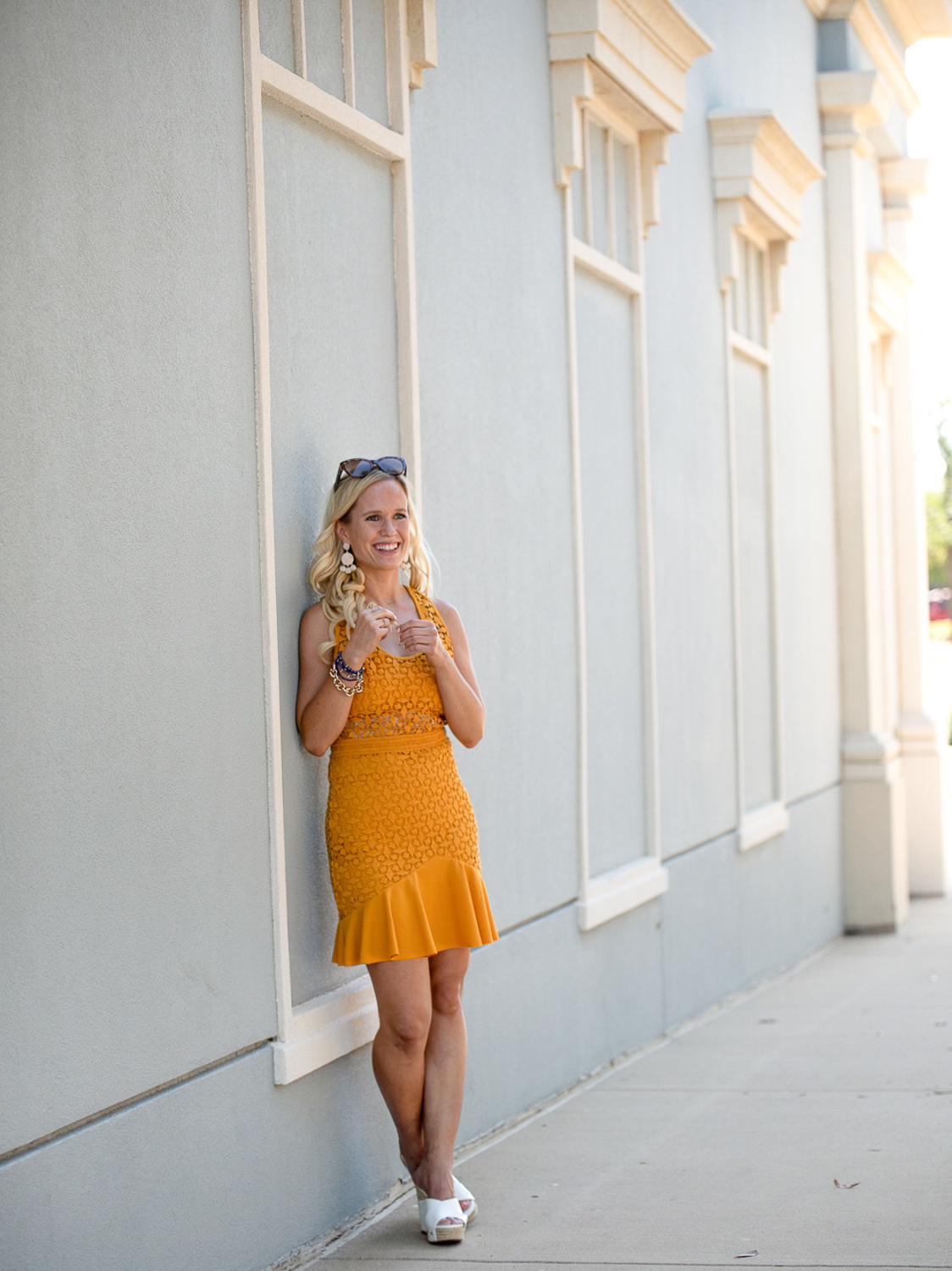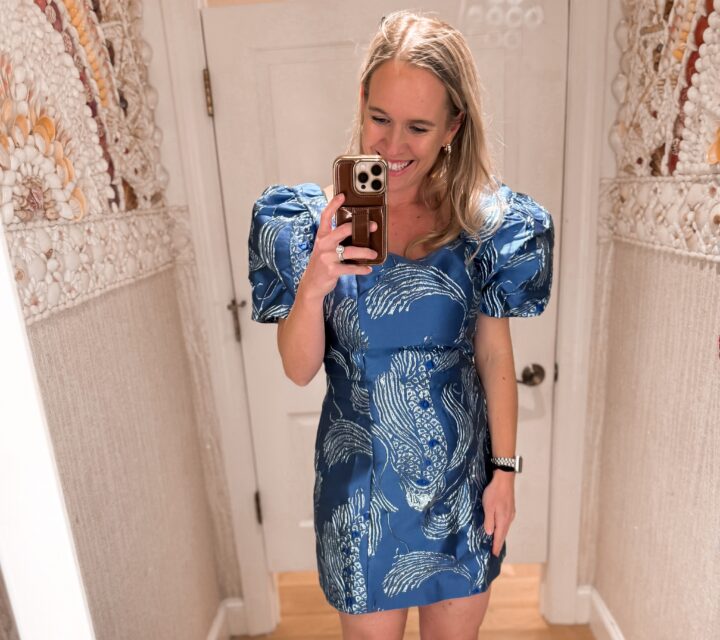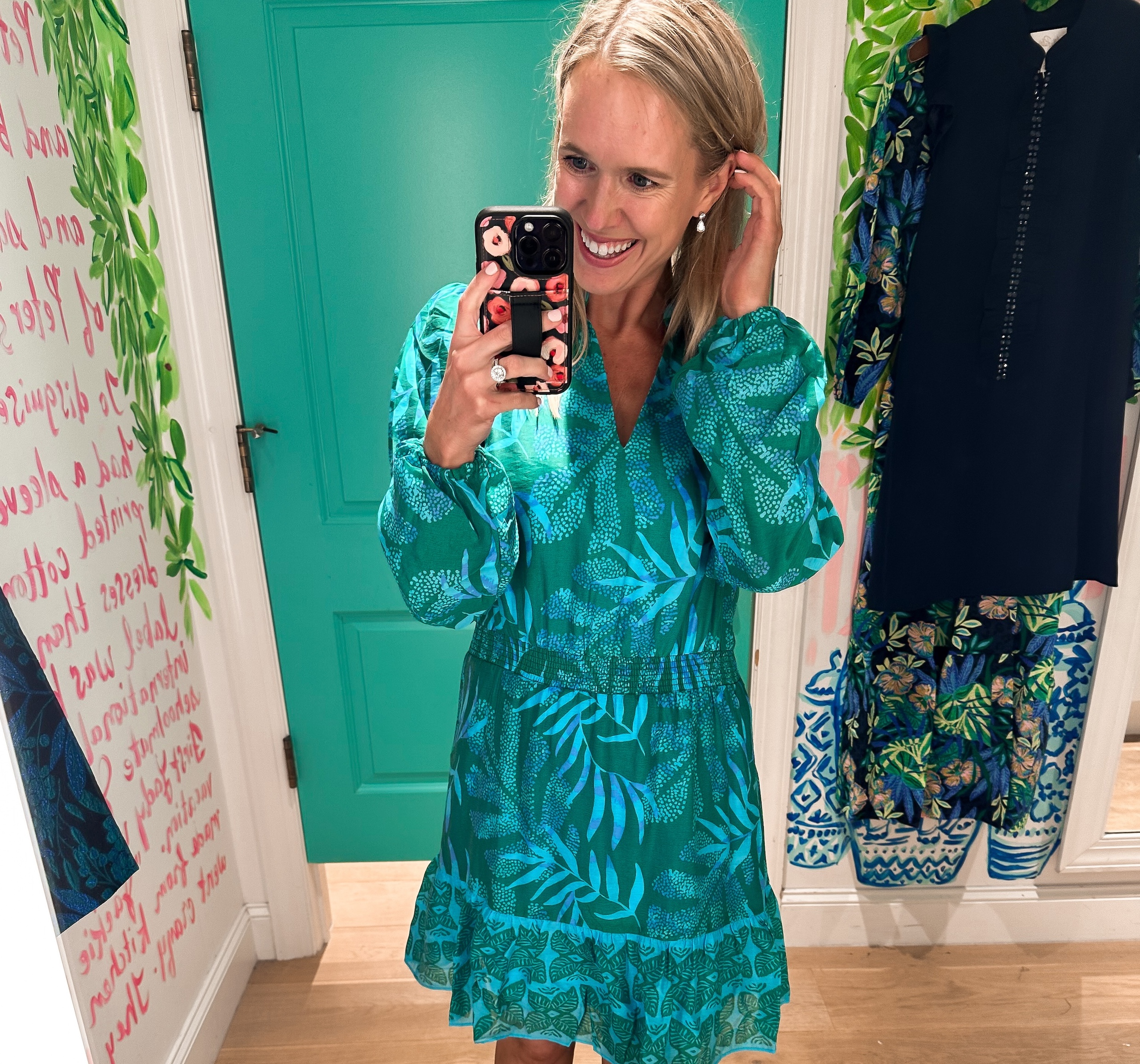 Happy Sunday! Another series of Sun Day Sunday in store today, with more frequently asked sun questions. Today is a hodge podge of information, with beach vacation questions and even a little tidbit to share with the man in your life, so there is something for everyone. I’m also sharing a yellow sundress that radiates happiness!
Happy Sunday! Another series of Sun Day Sunday in store today, with more frequently asked sun questions. Today is a hodge podge of information, with beach vacation questions and even a little tidbit to share with the man in your life, so there is something for everyone. I’m also sharing a yellow sundress that radiates happiness!
Sun Care FAQ #2
Q: Is getting a “base tan” before a beach vacation helpful in preventing sun damage?
A: In high school, preparing for spring break by getting a “base tan” was something I believed and practiced back in the day, but unfortunately the benefits of a base tan are mostly a myth. Getting a base tan before vacation will provide the equivalent of about SPF 3 when on the beach – which is very little protection compared to what is needed for the average tropical destination. Anytime you get a tan, whether indoor or outdoor, you are already damaging your skin. By getting a “base tan” you are accumulating more sun damage that puts you at greater risk for skin cancer down the road. Slather on SPF 30 sunscreen for much better protection!
Q: Which is better, using a beach umbrella or wearing high protection sunscreen?
A: In a study done in the Dallas area, participants either wore SPF 100 sunscreen or relaxed under a beach umbrella for 3.5 hours in the midday. Of those who used the umbrella for sun protection, 78% had sunburns the next day compared to 25% who wore sunscreen! A beach umbrella does not provide sufficient UV protection alone, therefore it is recommended to use combination sun protection measures.
Source:

Q: What are the differences between the two types of sunscreen?
A: Sunscreen is considered either (a) physical sunscreen, or (b) chemical sunscreen.
Physical sunscreen works to deflect UV rays from your skin. Sunscreen bottles that are physical blockers contain the ingredients zinc oxide and/or titanium dioxide on their ingredient list, and may also be labeled as “Mineral Sunscreens”. Personally, these sunscreens are my preferred type to use and are recommended for those with sensitive skin. An example of a good, reasonably priced physical sunscreen is this sunscreen.
Chemical sunscreens, on the other hand, work as a sponge by absorbing the sun’s rays. They contain ingredients like oxybenzone, avobenzone, octisalate, octocrylene, homosalate and octinoxate. There is some talk about oxybenzone causing hormonal changes when absorbed in our skin, however the American Academy of Dermatology states it is safe as there is no scientific data that causes significant health or hormonal problems.
Source: American Academy of Dermatology
Q: Who is more likely to get skin cancer, men or women?
A: Men are more likely to get skin cancer. Due to men working a lot of occupations that work mainly outside, they are more frequently exposed to UV radiation. Men are also less likely to wear sunscreen. In addition, some women’s cosmetics will include sunscreen that provides a little extra protection on days they may forget sunscreen.
So ladies, let’s encourage our men to wear their hat, UPF clothing and sunscreen outside!

Hope you enjoyed today’s Sun Care FAQ #2 in the Sun Day Sunday Series! If you missed the first FAQ, it is linked here.
About the outfit: I don’t normally wear many dresses with a sheer midsection, however this dress had just enough modesty to work with. This rich sunflower yellow color reflects the joy of summer and transitions nicely into early fall. You cannot help but be happy in this color! Pair it with wedges and these affordable earrings for warm days, or layer on a deep burgundy cardigan for cooler days.
Have a wonderful start to your week!
Live your life joyfully so,
Ashley



